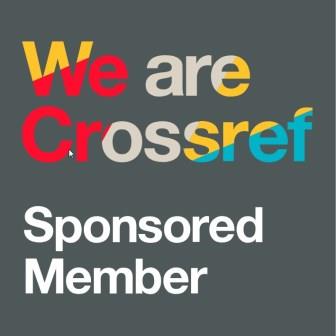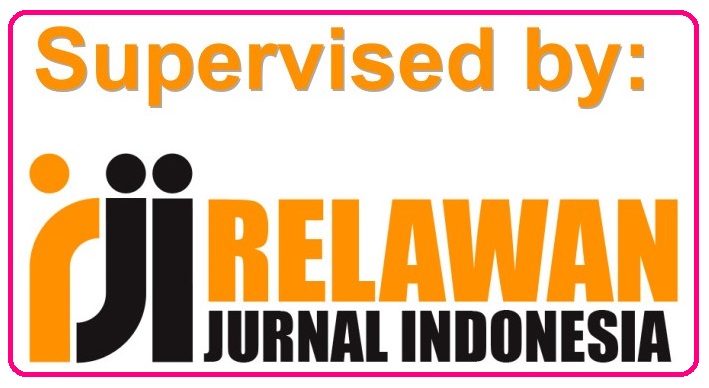The Implementation of Telegram in Reading Class to Improve Students’ Skimming and Scanning Skills
DOI:
https://doi.org/10.31849/elsya.v5i2.13535Keywords:
Digital communication, Reading Strategies, Scanning, Skimming, TelegramAbstract
Skimming and scanning are important reading strategies that allow individuals to quickly gather information from written materials. With the advance of digital communication platforms, like Telegram improving students' scanning and skimming skills has become increasingly relevant. While the utilization of technological resources in reading and teaching English has been examined in different settings, there is a need to investigate the potential of Telegram as a specific tool for enhancing skimming and scanning abilities. This research uses both quantitative and qualitative data collection methods. The respondents in the research are 40 English major learners. The protocols to gather the data were questionnaires and interviews. The study suggests that utilizing Telegram can help students to improve their motivation and engagement, which can further enhance the learning process. Exploring the future implications of employing Telegram requires more investigation, especially for skimming as well as scanning development, as well as its incorporation across different age groups and academic contexts. Nonetheless, the results of the research offer insightful information into the integration of digital communication platforms as effective tools for improving reading strategies, paving the way for innovative approaches to enhance literacy skills in the digital era.
References
Akyıldız, S. T., & Çelik, V. (2021). Using WhatsApp to support EFL reading comprehension skills with Turkish early secondary learners Using WhatsApp to support EFL reading comprehension skills with Turkish early secondary learners. The Language Learning Journal, 0(0), 1–17. https://doi.org/10.1080/09571736.2020.1865433
Alakrash, H. M., Razak, N. A., & Bustan, E. S. (2020). The Effectiveness Of Employing Telegram Application In Teaching Vocabulary : A Quasai Experimental Study. Multicultural Education, 6(1), 151–159. https://doi.org/10.5281/zenodo.3905099
Alam, M. Z., & Mizan, F. B. (2019). The Perceptions about Computer Assisted Language Learning for L2 Vocabulary Acquisition. Journal of Language Teaching and Research, 10(5), 926–936. https://doi.org/10.17507/jltr.1005.04
Amiryousefi, M. (2017). The incorporation of flipped learning into conventional classes to enhance EFL learners ’ L2 speaking , L2 listening , and engagement. Innovation in Language Learning and Teaching, 0(0), 1–15. https://doi.org/10.1080/17501229.2017.1394307
Anggraini, M. P., & Cahyono, B. Y. (2020). Scrutinizing EFL Learners ’ Online Reading Strategy Use Across Proficiency Levels. XLinguae, 13(4), 190–200. https://doi.org/10.18355/XL.2020.13.04.14
Awaludin, F. A., Abd Karim, R., & Mohd Saad, N. H. (2017). Padlet: A Digital Collaborative Tool for Academic Writing[Padlet: una herramienta de colaboración digital para la redacción académica]. Journal of Education and Social Sciences, 8(1), 179–184. https://n9.cl/cv40
Chen, Y. M. (2021). Understanding foreign language learners’ perceptions of teachers’ practice with educational technology with specific reference to Kahoot! and Padlet: A case from China. Education and Information Technologies, 25. https://doi.org/10.1007/s10639-021-10649-2
Creswell, J. W., & Creswell, J. D. (2018). Research and Design Qualitative, Quantitative and Mixed Methods Approaches. In Thousand Oaks California.
Esmaeili, Z., & Shahrokhi, M. (2020). The Impact of Memrise Application on Iranian EFL Learners’ Collocation Learning and Retention. International Journal of Language Education, 4(2), 221–233. https://doi.org/10.26858/ijole.v4i2.10672
Fadhilawati, D., Rachmawati, D. L., & Hastari, S. (2022). Padlet as a Creative Wall for Enhancing and Evaluating Students ’ Writing of Recount Text in a Higher Education. 12(2), 587–597.
Fadhilawati, D., Rachmawati, D. L., & Mansur, M. (2020). USING PADLET TO INCREASE THE STUDENTS ’ PROCEDURE. 9(November), 158–172.
Faramarzi, S., Tabrizi, H. H., & Chalak, A. (2019). Learners’ perceptions and attitudes towards L2 vodcasting tasks in an E-learning project. Teaching English with Technology, 19(3), 3–21.
Ghorbani, N., & Ebadi, S. (2020). Exploring Learners ’ Grammatical Development in Mobile Assisted Language Learning E. Cogent Education, 6(1), 1–14. https://doi.org/10.1080/2331186X.2019.1704599
Gould, R. K., Ardoin, N. M., Thomsen, J. M., & Wyman Roth, N. (2019). Exploring connections between environmental learning and behavior through four everyday-life case studies. Environmental Education Research, 25(3), 314–340. https://doi.org/10.1080/13504622.2018.1510903
Haryati, S., Trisnowati, E., Siswanto, S., & Al Firdaus, M. M. (2021). Identifying Higher-Order Thinking Skills on Lesson Plan: How Do Teachers Construct the Lesson Plan? Tadris: Jurnal Keguruan Dan Ilmu Tarbiyah, 6(2), 277–285. https://doi.org/10.24042/tadris.v6i2.8828
Izah, N. (2019). Upgrading Students ’ Vocabulary Through “ Memrise ” App. Proceeding of First Conference of English Language and Literature (CELL), 2019, 1–10.
Kusuma, L., & Suwartono, T. (2021). Students’ Response to the Use of Telegram in English Class during Covid-19 Pandemic. Premise: Journal of English Education and Applied Linguistics, 10(1), 20–36.
Mala, J., Mustofa, M., & Jihad, M. S. (2023). Using Kahoot ! To Improve Skimming and Scanning Skills. 6(3), 653–662.
Merriam, S. B., & Tisdell, E. J. (2016). Qualitative Research: A Guide to Design and Implementation (Fourth Edition). Jossey-Bass A Wiley Brand.
Naderi, S. (2020). EFL Learners ’ Reading Comprehension Development through MALL : Telegram Groups in Focus EFL Learners ’ Reading Comprehension Development through MALL : April. https://doi.org/10.12973/iji.2018.11223a
Nazari, H., Negari, M., Rajabi, P., & Khalaji, H. R. (2016). The Effect of Jigsaw Task on Iranian EFL Learners ’ Reading Skills Improvement. 3(1), 10–19.
Oh, C. M., Matrikulasi, K., Sembilan, N., Krish, P., & Hamat, A. (2022). Reading on Smartphones : Students ’ Habits and Implications for Reading Skills Reading on Smartphones : Students ’ Habits and Implications for Reading Skills. February.
Patton, M. Qa. (2015). Aualitative Research and Evaluation Methods: Fourth Edition. SAGE Publications, Inc.
Platzer, H. (2020). The role of quizlet in vocabulary acquisition. Electronic Journal of Foreign Language Teaching, 17(2), 421–438.
Putra, M. Y. R. F., & Inayati, D. (2021). The Teaching of English by Using Telegram Application: A Case Study at SMKN (Vocational High School) 4 Malang. Educalf, 4(2), 92–108. https://doi.org/10.21776/ub.educafl.2021.004.02.06
Rachmawati, D. L. (2022). Higher order thinking skills-oriented formative assessment developed by english as foreign language teachers.
Rachmawati, D. L., & Purwati, O. (2021). Web 2.0 Platform as a Creative and Interesting Supplementary Tool for Teaching Writing. Jurnal Pendidikan Indonesia, 10(2), 212–223. https://doi.org/10.23887/jpi-undiksha.v10i2.28489
Ramirez-avila, M. R. (2021). Word Recognition and Reading Skills to Improve Reading Comprehension. February. https://doi.org/10.18196/ftl.v6i1.10174
Sanosi, A. B. (2018). The Effect of Quizlet on Vocabulary Acquisition. Asian Journal of Education and E-Learning, 6(4), 4–11. https://doi.org/10.24203/ajeel.v6i4.5446
Shirinbakhsh, S. (2018). The Effectiveness of Telegram for Improving Students ’ Reading Ability. 5(4), 118–129.
Sitorus, N., & Azir, I. D. A. (2021). Enhancing Students ’ Reading and Listening Skills by Using Social Media Language Learning ( SMLL ) Approach through Features on Instagram Verified Accounts Enhancing Students ’ Reading and Listening Skill Using Social Media Language Learning (SMLL) Approa. Ethical Lingua, 8(2), 346–357. https://doi.org/10.30605/25409190.310
Suci, D. N., Basthomi, Y., Cahyono, B. Y., Anugerahwati, M., Masuara, F., & Anggraini, M. P. (2022). How Do Vocational Students Perceive the Use of Telegram for their Online Reading Comprehension ? Hermes – Journal of Language and Communication in Business, 62, 127–138.
Sun, Y. C., & Yang, F. Y. (2015). I help, therefore, I learn: service learning on Web 2.0 in an EFL speaking class. Computer Assisted Language Learning, 28(3), 202–219. https://doi.org/10.1080/09588221.2013.818555
Vahdat, S., & Mazareian, F. (2020). The Impact of Telegram on Learning of Collocational Knowledge among EFL High School Students. Applied Linguistics Research Journal, 4(03), 37–51. https://doi.org/10.14744/alrj.2020.18189
Wijayanti, P. R., Suwartono, T., & Kusuma, L. (2022). Perception of Vocational School Students towards Online Learning and their TOEIC Scores. International Journal for Educational and Vocational Studies, 4(1), 35–41. https://doi.org/https://doi.org/10.29103/ijevs.v4i1.5734
Xodabande, I., & Hashemi, M. R. (2023). Learning English with Electronic Textbooks on Mobile Devices : Impacts on University Students ’ Vocabulary Development. Education and Information Technologies, 28, 1587–1611. https://doi.org/10.1007/s10639-022-11230-1
Yin, R. K. (2016). Qualitative Research from Start to Finish Second Edition. The Guilford Press.
Zou, D., Huang, Y., & Xie, H. (2019). Digital Game-Based Vocabulary Learning: Where are We and Where are We Going? Computer Assisted Language Learning, 0(0), 1–27. https://doi.org/10.1080/09588221.2019.1640745
Downloads
Published
Issue
Section
License
- Author retains the copyright and grants Elsya Journal the right of first publication of the work simultaneously licensed under the Creative Commons Attribution-ShareAlike 4.0 License that allows others to share the work with an acknowledgment of the work's authorship and initial publication in this journal
- The author is able to enter into separate, additional contractual arrangements for the non-exclusive distribution of the journal's published version of the work (e.g., post it to an institutional repository or publish it in a book) with the acknowledgment of its initial publication in this journal.
- The author is permitted and encouraged to post his/her work online (e.g., in institutional repositories or on their website) prior to and during the submission process, as it can lead to productive exchanges, as well as earlier and greater citation of the published work (See The Effect of Open Access).












 Elsya Journal is licensed under
Elsya Journal is licensed under 